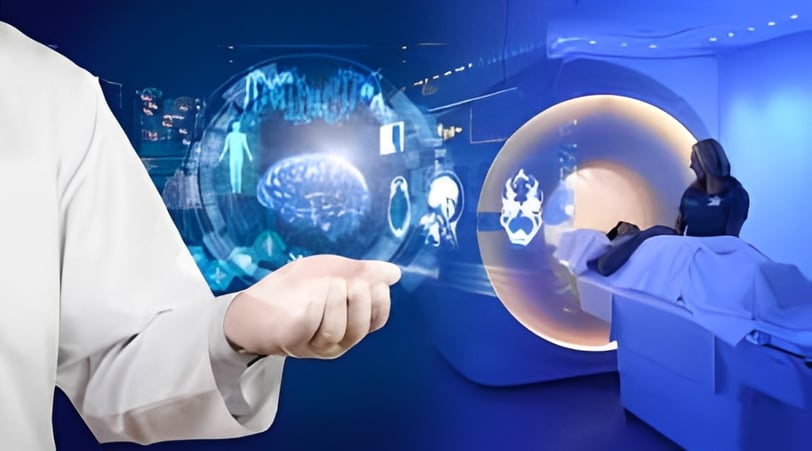How Artificial Intelligence is Revolutionizing Radiology and Healthcare
In recent years, Artificial Intelligence (AI) has made a significant impact on multiple industries, with healthcare being one of the most prominent sectors to benefit from this technological advancement. From enhancing the diagnostic process to improving patient care, AI is transforming how medical professionals work, and it's creating new opportunities for innovation in radiology.
3/25/20252 min read


The Role of AI in Radiology: A Game Changer
Radiology, a field that depends heavily on imaging technologies like X-rays, CT scans, and MRIs, is experiencing a revolution with the integration of AI. By using sophisticated algorithms and machine learning models, AI systems can analyze vast amounts of medical imaging data more quickly and accurately than ever before.
For instance, AI can help radiologists detect conditions like tumors, fractures, and cardiovascular diseases earlier than traditional methods. With its ability to process thousands of images at a time, AI can assist in identifying patterns and anomalies that might otherwise go unnoticed.
Benefits of AI in Radiology
Faster Diagnosis: AI can analyze medical images in seconds, drastically reducing the time it takes to diagnose a patient. This is especially important in emergency situations where quick decisions can make a life-or-death difference.
Improved Accuracy: AI's ability to detect subtle abnormalities in images makes it a powerful tool for increasing diagnostic accuracy. Studies have shown that AI systems can sometimes outperform human radiologists in certain tasks, such as detecting breast cancer or identifying lung nodules in CT scans.
Reduced Workload for Radiologists: Radiologists often face high workloads with a large number of cases to review. AI can assist by automating routine tasks and providing decision support, allowing radiologists to focus on more complex cases and improve efficiency.
Predictive Analysis: AI can be used for predictive modeling, where it helps healthcare providers anticipate future health outcomes based on current imaging data. This allows for better patient management, early intervention, and personalized treatment plans.
AI in Radiology: Real-World Applications
AI-powered tools have already been successfully implemented in various hospitals and clinics worldwide. Here are some examples of how AI is being used in radiology:
AI for Early Cancer Detection: AI systems like Google's DeepMind have demonstrated their ability to analyze mammograms with incredible accuracy. The system can detect early signs of breast cancer, enabling doctors to start treatment sooner and improve patient outcomes.
AI for Cardiology: In cardiology, AI is helping to detect heart disease by analyzing imaging data from echocardiograms and CT scans. AI systems can identify early signs of heart attacks or blockages, which can be critical in preventing cardiac events.
AI for Personalized Treatment: AI is also being used to develop personalized treatment plans based on an individual’s unique medical images. This tailored approach helps doctors make informed decisions about the best course of action for their patients.
Ethical Considerations and Challenges
While AI holds immense potential, its integration into healthcare comes with ethical concerns. The use of AI in medical diagnostics raises questions about data privacy, algorithmic transparency, and the potential for biases in AI models. It's essential for AI developers and healthcare providers to address these issues to ensure that AI remains a beneficial and equitable tool.
The Future of AI in Radiology
As AI technology continues to evolve, its applications in radiology will only expand. With improvements in machine learning and deep learning algorithms, AI will become even more accurate and efficient. It could also lead to more widespread use in developing countries, where there is often a shortage of radiologists, helping to bridge the gap in healthcare accessibility.
In the coming years, AI may not just be a tool for assisting radiologists; it could become an integral part of the healthcare team, working alongside human doctors to provide the best possible care for patients.
Reference Website Links:
National Institutes of Health (NIH) - AI in Healthcare
Website: https://www.nih.govRadiological Society of North America (RSNA)
Website: https://www.rsna.orgHealthIT.gov - AI in Healthcare
Website: https://www.healthit.govAI in Medicine – Nature
Website: https://www.nature.com/articles/s41591-019-0405-7Google Health - AI in Healthcare
Website: https://health.googleAmerican College of Radiology (ACR) - AI Resources
Website: https://www.acr.org
